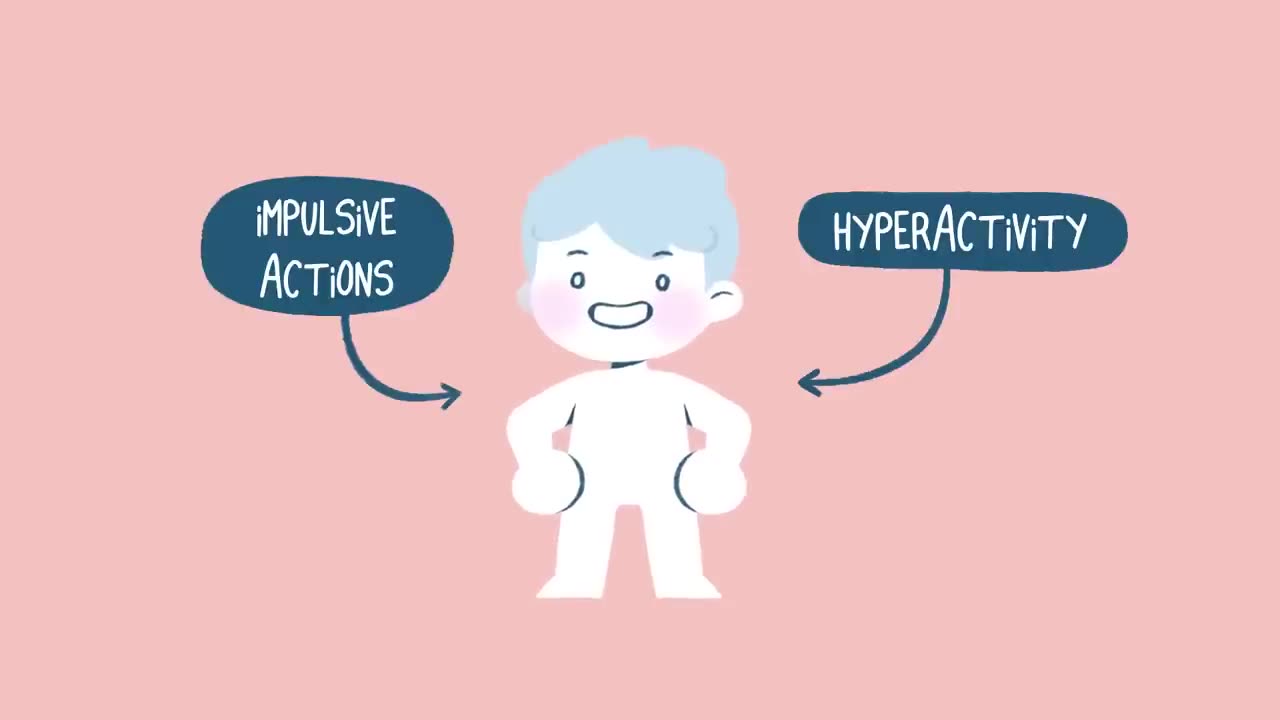Premium Only Content

1:41 / 6:14 What's Your ADHD Type ? - With Symptoms Examples 👀
✨ Chapters:
0:12 What are the different types of ADHD?
1:13 Hyperactive-Impulsive Type ADHD
2:33 Inattentive Type ADHD
4:22 Combined Type ADHD
5:07 How do I find out what type of ADHD I have?
🔗 Interesting articles
ADHD and Feeling always tired: https://www.theminiadhdcoach.com/blog...
ADHD & Impulsivity: https://www.theminiadhdcoach.com/blog...
ADHD & Anxiety: https://www.theminiadhdcoach.com/blog...
Did you know that people diagnosed with ADHD often experience the condition quite differently from one another? This is because each individual’s condition is a little varied. but also because there are different types of ADHD. Each type has different symptoms and traits that stand out, impacting life in a range of ways.
In recent years, valuable research has shown that ADHD is much more complex than originally thought. If you feel like you’re struggling to process your diagnosis against what the average person believes ADHD to be, that’s okay! You’re not alone.
The three different types of ADHD are hyperactive-impulsive type, inattentive type, and combination type, which feature symptoms of the first two types.
Hyperactive-impulsive type ADHD
Hyperactive and impulsive types are characterized by impulsive actions and hyperactivity. Those diagnosed with this type of ADHD may also display inattention and a lack of focus, but hyperactivity and impulsive behavior will be much more prominent in day-to-day activities.
Some of the common symptoms of someone with this type of ADHD include constantly feeling restless and fidgety, talking a lot and fast, having trouble engaging with quiet and relaxing activities, general impatience, and impulse purchasing. Inappropriate comments and speaking without considering what you are saying are also symptoms of this type.
These symptoms can make learning tough, particularly in a classroom setting. Research has shown that people who identify as male are more likely to be diagnosed with this type, particularly younger boys. To receive a diagnosis of hyperactive-impulsive type ADHD, a child up to the age of 16 must have at least six symptoms. If you are 17 or older, you must have at least five symptoms. These symptoms, in both children and adults, must have been present for at least 6 months.
Inattentive-type ADHD
Inattentive-type ADHD is typified more by symptoms of inattention than high energy levels and impulsivity. Usually, someone who has been diagnosed with inattentive ADHD will find it more difficult to maintain attention, struggle to remain focused, and often have trouble following detailed directions.
As with any type of ADHD, the symptoms of the inattentive type will often vary from person to person. Do you become bored quickly? Find it hard to follow instructions? Perhaps you are easily distracted and, at times, struggle to listen. Or maybe someone has said to you in the past that you always look like you’re daydreaming. These are all common symptoms of inattentive-type ADHD.
However, while there are identifiable symptoms, it is important to remember that there is no clear-cut dividing line between the different types. That means that even though you may well have been diagnosed with the inattentive type, you could still experience impulsivity and hyperactivity at times. Interestingly, inattentive-type ADHD is statistically more common in those who identify as female than male.
In the past, inattentive ADHD was referred to as Attention Deficit Disorder (ADD) without reference to hyperactivity. Now, however, the inattentive type more accurately comes under the umbrella of ADHD. To be diagnosed with this type of ADHD if you are 16 or under, you will need to present six or more symptoms for at least six months. If you are 17 or older, you must have presented at least five symptoms for six months or more.
Combined-type ADHD
Combined-type ADHD is exactly what it sounds like. Those diagnosed with this type of ADHD display six or more symptoms of the inattentive type and six or more symptoms of the hyperactive-impulsive type. This means that someone diagnosed with the combined type will likely experience hyperactivity and impulsivity while also struggling with inattention and distractibility. It may be difficult for them to concentrate in class or at work, and they will likely struggle with self-control.
-
 2:13:07
2:13:07
vivafrei
16 hours agoEp. 243: HOLIDAY SPECIAL! The Great H1B Visa Debate! Jay z Gets Scorched! Attack in Germany! & MORE!
152K338 -
 16:40
16:40
Russell Brand
17 hours agoTHIS MASSIVELY BACKFIRED...
194K658 -
 25:41
25:41
SB Mowing
21 hours agoPICTURE living next to THIS and not knowing what to do…
150K77 -
 2:16:01
2:16:01
George Galloway
1 day agoNEW YEAR COUNTDOWN - MOATS with George Galloway - EP 408
145K246 -
 18:39
18:39
Stephen Gardner
17 hours ago🔥BREAKING! Trump's SHOCKING New Demand | Biden admits DOJ TARGETED Trump Illegally!
112K509 -
 1:20:23
1:20:23
Josh Pate's College Football Show
23 hours ago $16.17 earnedCFP Prediction Special: OhioSt vs Oregon | UGA vs Notre Dame | Texas vs ASU | Boise vs PennSt
133K6 -
 7:50:03
7:50:03
Scottish Viking Gaming
21 hours ago💚Rumble :|: SUNDAY FUNDAY :|: Virginia has two Verginers, Change my Mind!
135K18 -
 1:49:50
1:49:50
Winston Marshall
2 days agoThe DARK Reality of Socialism - Historian Giles Udy
107K128 -
 1:09:28
1:09:28
Sports Wars
19 hours agoBengals STAY ALIVE In OT Thriller, ESPN's Ryan Clark SLAMMED, NFL DESTROYS NBA On Christmas
88.3K19 -
 9:37
9:37
EvenOut
1 day ago $5.79 earnedThe Non-Reflecting Mirror Scare Twin Prank!
75.1K5